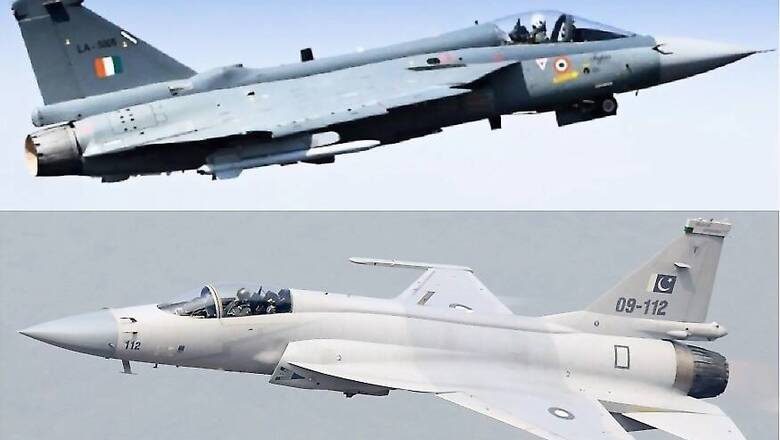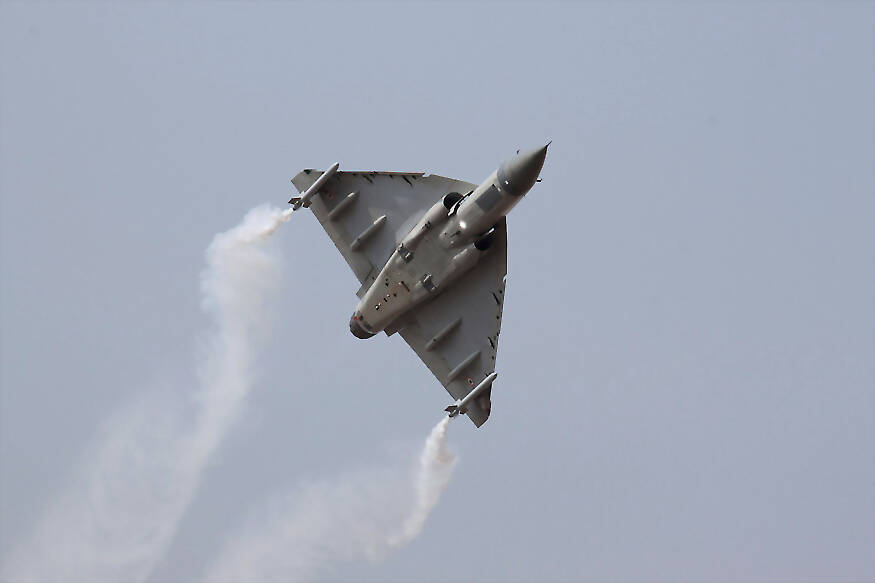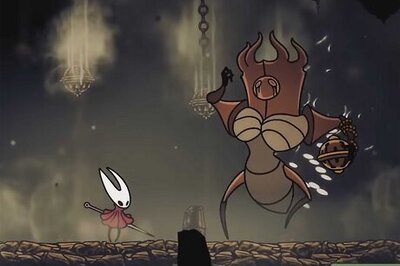
views
The government of India has sealed a deal worth Rs 48,000 crore to procure additional 83 India-made Tejas light combat aircraft from Hindustan Aeronautics Ltd. The deal is the biggest ever in the indigenous military aviation sector. Earlier, an order of 40 Tejas aircrafts was floated, completing the initial order of 123 HAL made fighter jets. Tejas is a single engine multi-role supersonic fighter aircraft that will replace the ageing Soviet-era MiG-21 Bison jets and boost IAF’s combat prowess.
On the other hand, the JF-17 Thunder has been a source of pride for the Pakistan Air Force who considers them a home-made fighter jet, even though its co-developed with China. Pakistan recently updated its JF-17 Thunder to add more firepower to the jet that competes against the Indian Air Force’s HAL-Tejas LCA. Here’s how the Indian Air Force’s Tejas LCA and Pakistan Air Force’s JF-17 Thunder stack against each other:

History
Tejas LCA: India has long bought its fighter jets from countries like Russia, France and Britain under a license agreement to manufacture it locally by Hindustan Aeronautics Limited. However, back in the 1980s, HAL started the Light Combat Aircraft (LCA) programme to replace the ageing Soviet sourced MiG-21. With India’s former Prime Minister giving the LCA its name – Tejas – the indigenously built fighter aircraft was inducted in the Indian Air Force with the IAF placing a 20 jet order initially and the first Tejas Squadron was formed in 2016 called the Flying Daggers. Till now IAF has placed an order of 40 Tejas Mk 1, including 32 single-seat aircraft and eight twin-seat trainers. IAF has also formalized procurement of a further 83 fighters in Mk 1A configuration.
JF-17 Thunder: Pakistan has long been dependent on China, United States and Russia for their air firepower. In 1995, Pakistan and China signed a MoU for joint design and development of a new fighter. The same year. USSR’s Mikoyan (known for MIG series of planes) had joined the project to provide “design support". The result was the JF-17 Thunder or CAC FC-1 Xiaolong that was primarily developed to meet the Pakistan Air Force’s requirement for an affordable, modern, multi-role combat aircraft. The development of JF-17 was headed by Yang Wei, China’s “ace designer" who has also designed China’s Chengdu J-20. The fighter jet is made using 58% of the airframe from Pakistan and 42% from Chinese/Russian-origin. As of 2017 Pakistan Aeronautical Complex has manufactured 70 Block 1 type jets and 33 jets of the Block 2 type in the country for use by the Pakistan Air Force.

Specification
Tejas LCA: The HAL-made fighter jet is ideally a single seat fighter jet but can be made into a twin seat jet depending on armed forces’ requirements, which is mostly for training purposes. The jet is light and simple as compared to other foreign-made fighter jets and is famous for its delta wing arrangement. It is powered by a single General Electric engine rated at 53.9 kN (12,100 lbf) thrust dry, 90 kN (20,200 lbf) with afterburner. It has a length of 13.2 metre and a wingspan of 8.2 metre. The plane weighs 6500 kg (dry) and has a total takeoff weight of 13000 kg. The Tejas has a maximum speed of Mach 1.8 (2222 kmph) and can travel 500 km with drop tanks. The Tejas can carry laser guided bombs, air-to-air and air-to-surface missiles, anti-ship missiles, and has Israel’s Elta EL/M-2032 multi-mode fire control radar on board.
JF-17 Thunder: The JF-17 Thunder is available in both single-seat and double seat configurations and is a single engine aircraft. It has a maximum high speed of Mach 1.6 (1975 kmph), a length of 14.93 metre and a wingspan of 9.48 metre. The plane weighs 6,586 kg (dry) and has a maximum takeoff weight of 12,383 kg. The Thunder uses a single Klimov RD-93 afterburning turbofan engine with digital electronic engine control (DEEC) and has a 49.4 kN (11,100 lbf) dry thrust and 85.3 kN (19,200 lbf) with afterburner. The JF-17 can carry air-to-air and air-to-surface missiles, laser guided bombs and also has a china-made Airborne Pulse Doppler Fire-Control Radar on-board.
Summary
The HAL Tejas is fully indigenous made fighter jet, while the JF-17 is a Pakistan-China jointly developed jet. The HAL Tejas is both faster, lighter than the JF-17 and has a more powerful engine too. The payload carrying capacity is more than the JF-17 too. The HAL Tejas is also modified to use for Naval forces and can take-off and do arrested landing on aircraft carriers, as recently demonstrated by HAL and Indian Navy.
Read all the Latest News, Breaking News and Coronavirus News here

















Comments
0 comment